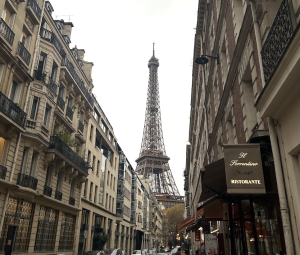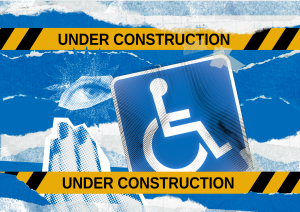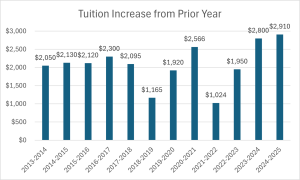
My teacher struggles as she shuffles hurriedly into the room, 15 minutes late to my music lesson. At only five feet tall she epitomizes the term “little old lady,” and her most recent knee procedures make simple tasks like walking painfully difficult. After taking a seat by the window, she tries to laugh off how the lack of disabled parking had forced her to park illegally and spent the rest of the lesson nervously checking outside to see if Campus Safety had ticketed her.
This incident repeated throughout last year with parking lots at full capacity, and with the recent construction and parking closures, I am already seeing the number of similar issues sky rocket. Administration is approaching the situation reactively as a matter of student convenience, detrimentally ignoring the fact that the lack of parking disproportionately impacts low-income students and students with disabilities.
Rollins has attempted to rectify the tension caused by parking closure with its new 75-spot parking lot a mile away from campus. However, this does not even begin to alleviate the total number of parking spaces lost after five more lots closed last week, which total out to more than 200 spaces.
The distance from campus is also a serious concern—the shuttle has only a 28-person capacity and an approximate loop time of 25 minutes. It begins running at 7:30 a.m., leaving students with 8 a.m. classes at risk of being late if there are not enough seats on the first trip to campus.
Conversely, times of heavy traffic will slow this process down, putting students working unforgiving hourly-wage jobs at risk of being late to class and work. Additionally, because the shuttle service only runs until 5:30 p.m., students who take night classes or need to take advantage of late-night resources on campus will need to walk the mile or rely on someone else’s car. However, the distance with a heavy book bag in oppressive heat or pouring rain not only takes an excessive amount of time, it is often impossible for a student with a disability.
Administration is attempting to obtain another 100 spots at a different location off-campus, which some might argue would fully replace the number of spots lost. However—even though the new 100 spots are not promised, and their distance from campus has not been disclosed—this new lot would still leave us 28 spots short.
These issues should have been addressed before construction started, because students are already being put at a disadvantage. We don’t know if disabled parking will be promised or made available in these temporary parking lots. The added time is a cost that working and low-income students pay at a higher price, as time is a deal-breaking commodity when balancing school and hourly work schedules. I should know; I’m a low-income, working student.
I challenge the administration to begin approaching the impact of this construction on the Rollins community, not just the privileged, able-bodied members, more proactively. We need better additions of temporary parking, proportionate and secured access to accessible spots, and an attitude of urgency. Otherwise, whose interests are Rollins administrators trying to serve?
















Be First to Comment